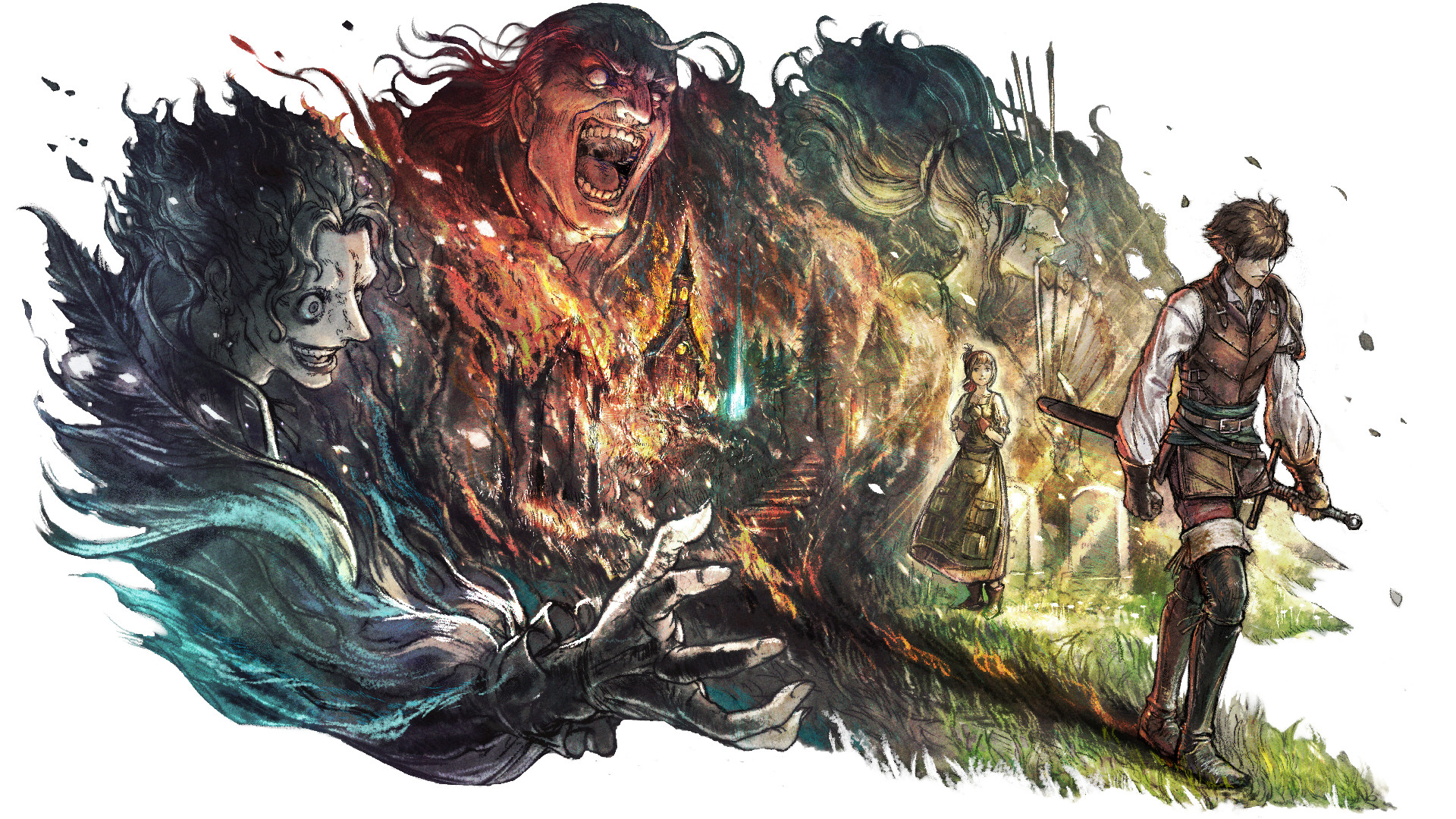GamesRadar+ Verdict
Soulstice does itself no favours by borrowing heavily from Bayonetta, and then falls short of its inspiration in every area. At best this is a functional but uninspired character action game. At worst it's a poor appreciation of the genre's finer points, stacking up systems that detract from the purity of exhilarating combat.
Pros
- +
Combat basics and weapons are slick and entertaining
Cons
- -
Uninspired locations and character designs
- -
Secondary character mechanics are frustrating to use
- -
Exploration sections are bland and repetitive
Why you can trust GamesRadar+
Early on in Soulstice you'll meet Layton, a member of the religious order that has sent you on your mission. As an 'observer', he's supposed to assist protagonist Briar as she heads towards a great tear in the sky that's corrupting the city of Ilden. Unfortunately, he doesn't have much faith in the novice warrior – she's a pretender merely wearing the armour of the elite ashen knights, he believes, and her inexperience will see her fail. Of course, as the hero of the story, Briar will prove him wrong. But when it comes to Soulstice itself, Layton's concerns feel more prescient. While this action game wields the weapons of accomplished genre-mates, it rarely convinces that it knows how to use them.
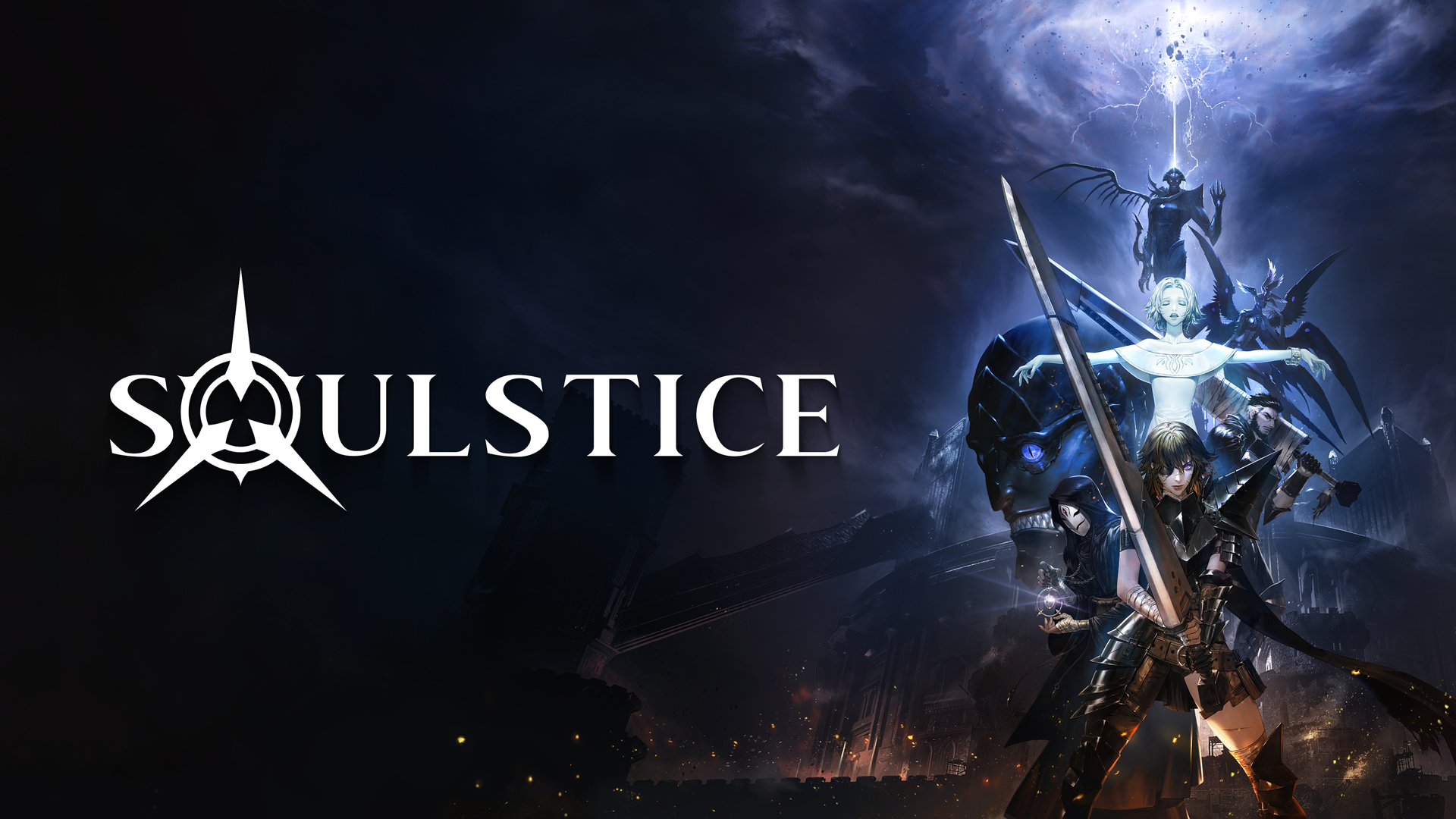
Release Date: September 20, 2022
Platform(s): PC, PS5, Xbox Series X
Developer: Reply Game Studios
Publisher: Modus Games
In particular, developer Reply Studios must be big fans of Bayonetta. A prologue sequence sees Briar and her ghostly sister Lute plummeting through the air on hunks of broken masonry, fighting demonic creatures that teleport in all around. Familiar. And as in PlatinumGames' title, this opening isn't a tutorial so much as a warm up, an opportunity to hammer buttons and see what your avatar has in her locker, showcasing her dynamism before a more measured first level.
By aligning itself so firmly with the queen of arse kicking, though, Soulstice gives itself a heck of a lot to live up to – and it then struggles in vain over the next dozen or so hours to escape the shadow it so deliberately invoked. In what is often a disorderly and aggressively tepid experience, at no point does it attain the level of imagination, depth, refinement, or sheer style of its greatest influence.
Sister act
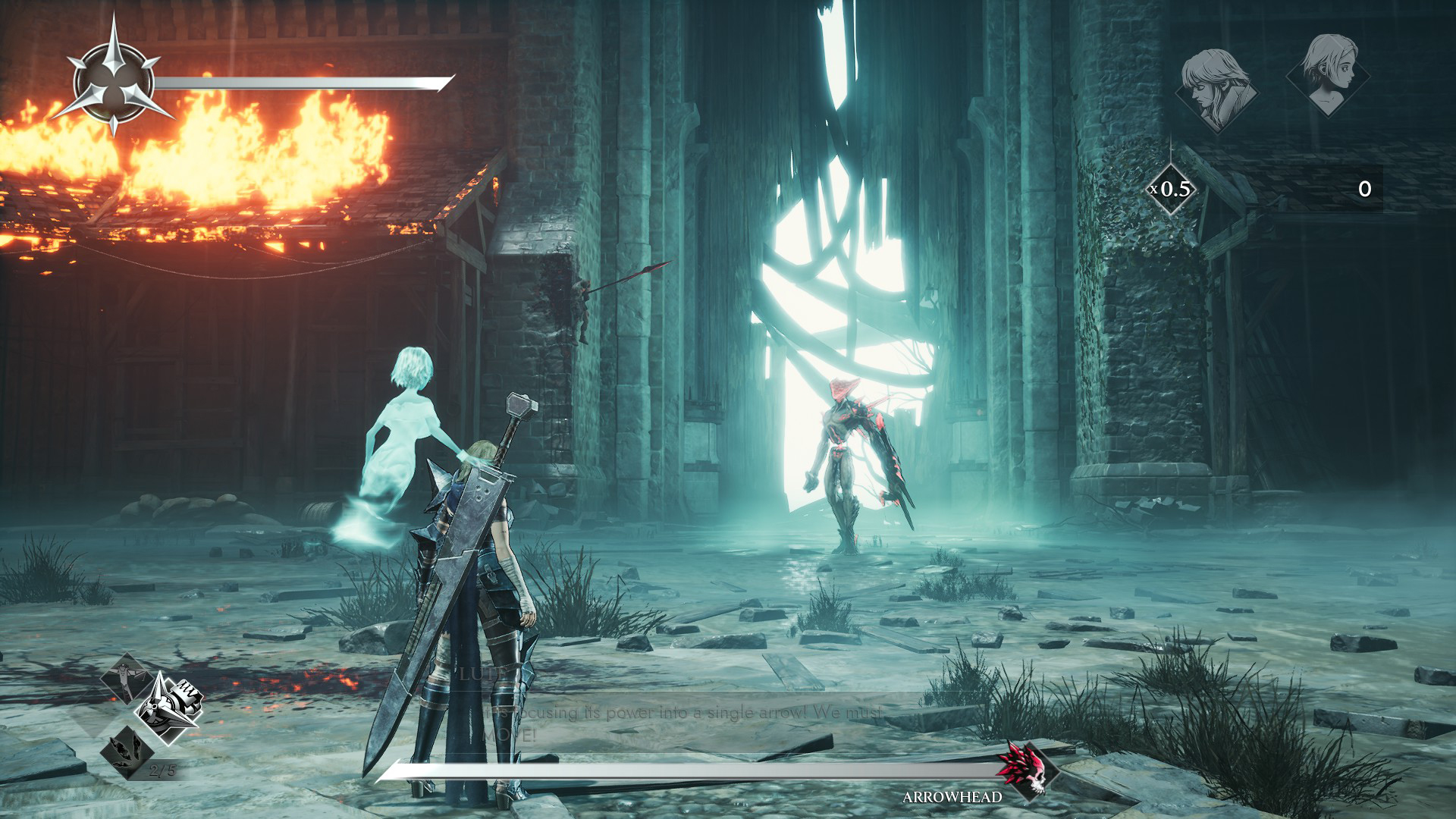
Take the setting, for instance, a dead town of cold grey stonework and colder, greyer sewers. Yes, there are some striking views, but little colour or architecture that might yank you free of mediaeval fantasy cliché, and the streets you'll be stepping through late in the game look an awful lot like those near the beginning.
Briar and Lute, too, are rather plain. Next to a Bayonetta or a Dante, the rookie ashen knight could be one of the pre-set options in a Soulslike character creator, while her ethereal sibling looks like a relative of Casper the friendly ghost. It's no less difficult to get excited when they meet the game's first enemies – a bunch of zombie soldiers and blobby spirits. Indeed, barring a few notable bosses, the game's abominable creations never quite make the grade.
Potentially intriguing at least is the relationship between Briar and Lute. The sisters have been joined together as a 'chimera', an entity made up of two individuals, one of whom has died and become a 'shade', sticking to the survivor and helping her in battle with spirit energy. How they came to be in this predicament is initially unclear, but crucially it's a volatile state that could see Briar 'transcend' into a mindless monster if she doesn't learn to control it.
This duality adds some texture to a plot that otherwise mumbles along, but also to combat itself. At certain points, you can send Briar into fury or berserk modes, which boost power but push her closer to death or insanity, so you have to learn to moderate them. For her part, Lute can fire energy shots to interrupt enemy attacks, and also conjure two different energy fields around Briar that enable her to attack creatures or interact with obstacles that are normally invulnerable.
Weekly digests, tales from the communities you love, and more
Energy crisis
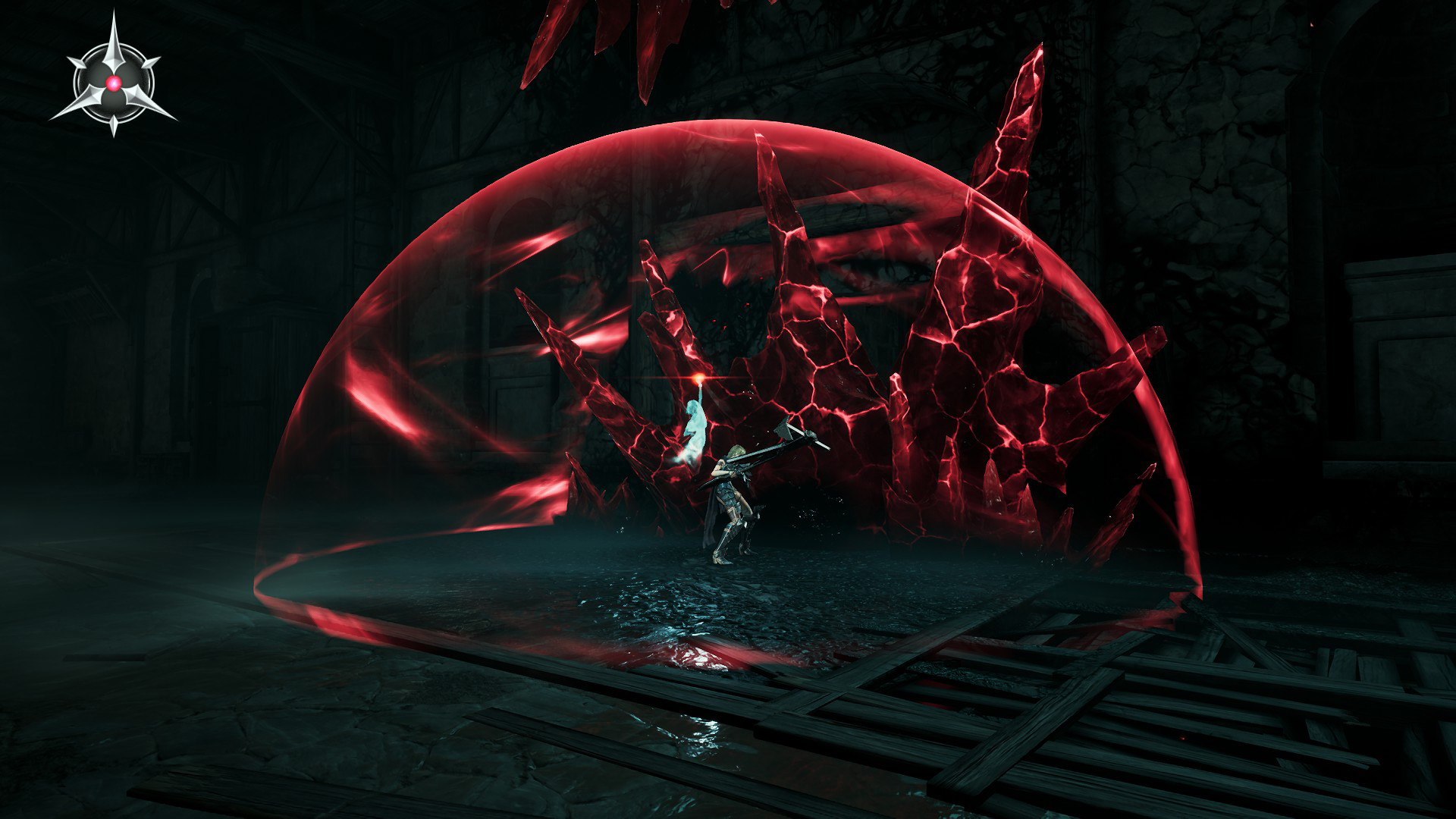
While this sounds neat in a tooltip, however, it becomes claggy and caustic in the hands. Briar's transcended conditions rarely become available unless you perform near flawlessly in combat, and the systems built around Lute make such feats less likely. In effect, Lute does your blocking and parrying. A button prompt appears when enemies are about to attack, and a quick press sees her intervene. This is clever in the sense that you can stop assaults coming from any direction while slashing away at the fiend in front of you, but it's not as reliable or as pleasingly tangible as directly controlling your defence. Lute uses different kinds of interrupts depending on context, so you have to be continually mindful whether, say, an enemy attack has been cancelled or merely paused for a second. But also with some attacks no button prompt appears, so you get struck with no warning thanks to some brief windup animations.
Deploying the energy fields is more frustrating still. Aside from regular enemies, you have to deal with wraiths, spirits that can only be struck while inside a blue bubble that Lute can summon, and possessed monsters that can only be hit while inside a red bubble. When you've got different types of enemies in play, opening and closing fields to match the thing you're trying to kill has all the fussiness of a game of Simon Says – in that nothing you do counts unless you've remembered to hit the right button first.
This fiddly exercise is exacerbated by Lute's very limited energy supplies, because if they deplete you lose the ability to use either field for a few seconds, and when wraiths have a habit of teleporting rapidly and the camera ties itself in knots trying to keep up in busy battles, you often run dry just as you get a monster in range. Not to mention that Lute never stops jabbering about her energy running out, which only intensifies the pain.
Crystal mazes
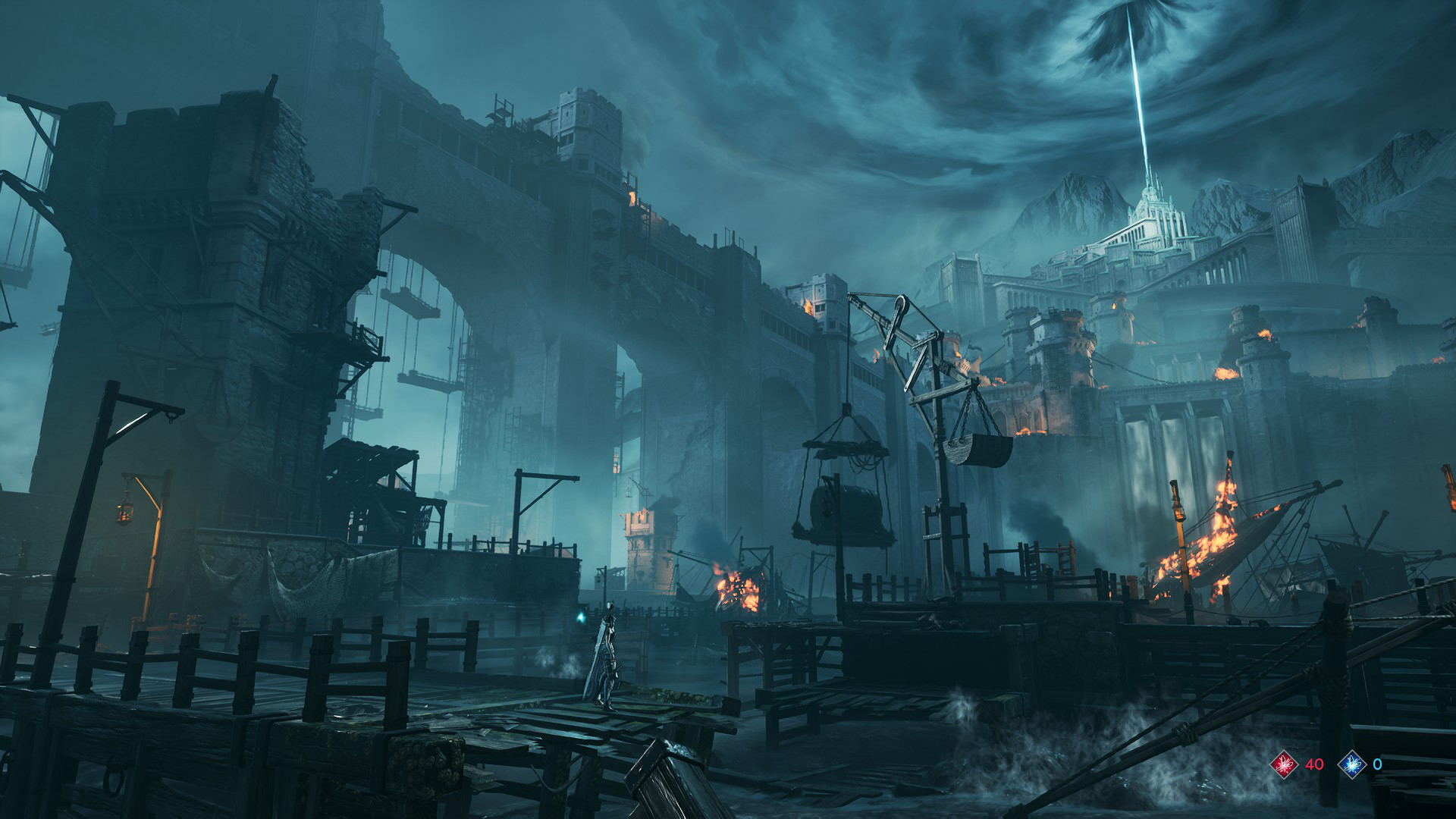
Outside combat, these energy fields come into play as a means of destroying red or blue crystals, either to unblock a path or collect currency for upgrades. In practice, that means you'll be using your weapons for mining as much as fighting, whacking away at ruby and sapphire formations to progress. Even though a few mildly interesting wrinkles are introduced in these processes – such as crystal platforms and crystals that explode if you use the same colour field around them – Soulstice doesn't really lean into these ideas in a way that makes them feel more than twinkling filler.
In fact, there's a lot of downtime between bouts that seems content in its mediocrity. Alternate paths off the main track exist to be discovered and take you to handy items or challenge rooms (almost exact copies of Bayonetta's Alfheim portals, although never as fun), but the act of exploring itself is dissatisfying. Fixed camera angles in these sections make navigating more labyrinthine areas bewildering as you're turned around and pointed in different directions. Plus the whole place is liberally caked with invisible walls, marking off where you can and can't jump, which creates a sense of artificiality.
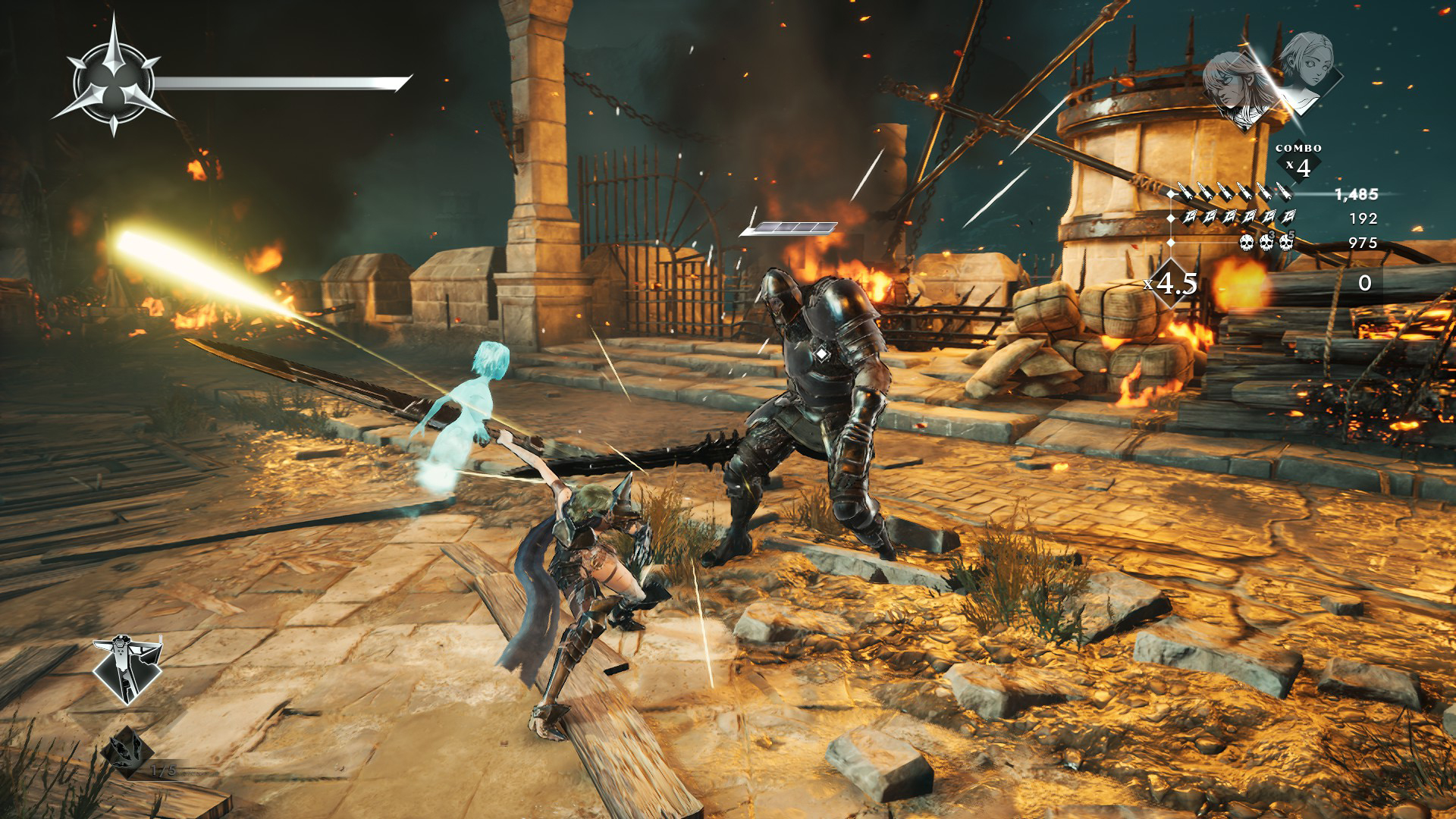
"Opening and closing fields to match the thing you're trying to kill has all the fussiness of a game of Simon Says – in that nothing you do counts unless you've remembered to hit the right button first"
All this pottering about also robs Soulstice of momentum between encounters, which is a shame because the basics of fighting can still click together smartly. Briar begins with two weapons, but Layton gives her more along the way, and the game encourages you to keep switching between them. Sometimes, it's possible to build up a flow state by combining them, maybe burying a zombie dog into the ground with a war hammer smash, then double jumping to whip a couple of harpies out of the sky, then sword-lunging towards a zombie knight, for example – the kind of linked sequence you'd expect from genre stalwarts. And it's no coincidence that these are regular enemies that can be fought without energy fields, so you can simply get stuck in.
Yet, even here, Soulstice finds a way to fumble its delivery because its upgrade paths require you to pay to unlock individual moves for each weapon. Now, can you remember in the heat of battle which ones have the launch/uppercut strike or the dash attack available, and which don't yet? It's another layer of obfuscation rather than depth, the likes of which Bayonetta would no doubt greet with an elegant shake of the head. As for Layton, he describes Briar and Lute as "Unstable, unruly, and unwilling to follow orders." He's right that they're difficult to control and lack finesse, but far from being mavericks, they also find themselves trapped in an alarmingly ordinary adventure.
Soulstice was reviewed on PC, with a code provided by the publisher.
More info
| Genre | Action |
Jon Bailes is a freelance games critic, author and social theorist. After completing a PhD in European Studies, he first wrote about games in his book Ideology and the Virtual City, and has since gone on to write features, reviews, and analysis for Edge, Washington Post, Wired, The Guardian, and many other publications. His gaming tastes were forged by old arcade games such as R-Type and classic JRPGs like Phantasy Star. These days he’s especially interested in games that tell stories in interesting ways, from Dark Souls to Celeste, or anything that offers something a little different.

